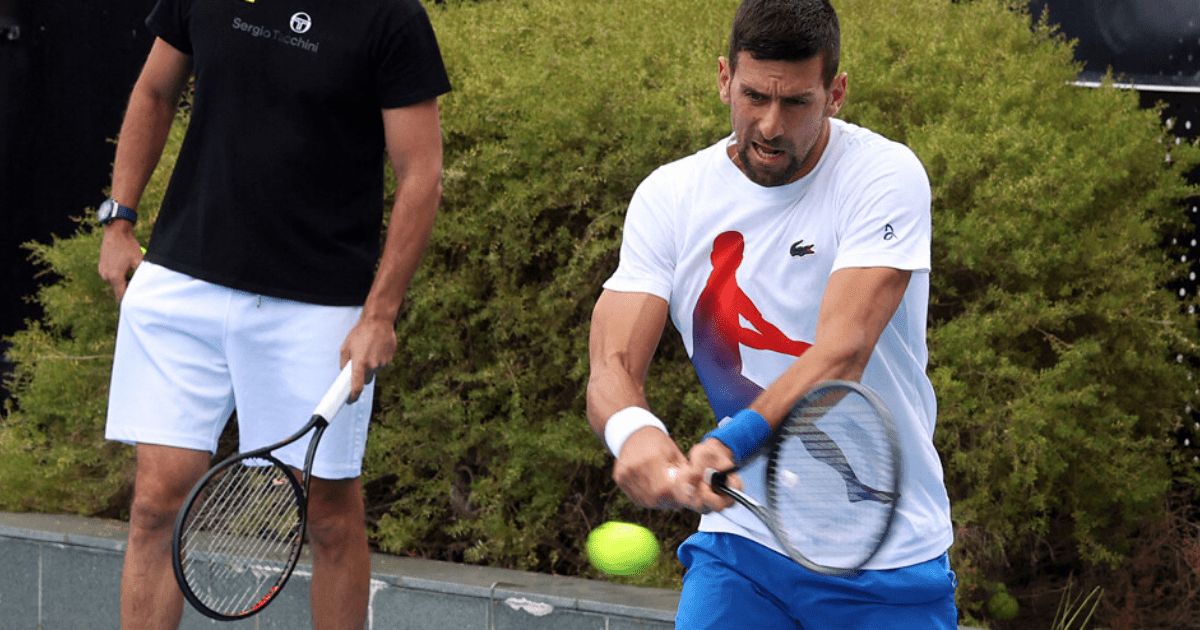The Man Behind Djokovic's Success
Novak Djokovic is undoubtedly the greatest of all time in men's tennis, with an impressive 24 Grand Slam titles under his belt. But who is the person behind much of his success? Meet Goran Ivanisevic, Djokovic's coach and mentor.
A Tennis Legend in His Own Right
Goran Ivanisevic, born on September 13, 1971, in Split, Croatia, is no stranger to the tennis world. He is the only wildcard player to ever win a men's singles tennis Grand Slam. His career highlights include reaching a career-high ranking of No.2 in the world and stunning Boris Becker in the first round of the 1990 French Open.
Wimbledon Glory and Hall of Fame
Ivanisevic's most notable achievement came in 2001 when he won the Wimbledon title, defeating Pat Rafter in a thrilling final. This victory not only etched his name into the history of the sport but also earned him a well-deserved place in the Hall of Fame.
A Successful Transition to Coaching
After retiring from professional tennis in 2004, Ivanisevic found success as a tennis coach. He led Marin Cilic to victory at the 2014 US Open and has also worked with players like Tomas Berdych and Milos Raonic. Since 2019, he has been a crucial part of Novak Djokovic's team, helping him achieve numerous records and milestones.
Off the Court
Outside of tennis, Ivanisevic has had his fair share of personal milestones. He married Tatjana Dragovicin in 2009, with whom he has two children. After their divorce, he married Nives Canovic in 2017, and they have a son together named Oliver.
In Conclusion
Goran Ivanisevic's journey from a tennis champion to a top-notch coach is truly inspiring. His impact on Novak Djokovic's career cannot be overstated, and his own achievements on the court are nothing short of remarkable. Together, they form a formidable team that continues to dominate the world of tennis.
Frequently Asked Questions
What role do tennis icons play in popularizing the game?
Tennis icons have played a pivotal role in popularizing the sport globally. Throughout history, charismatic players such as Billie Jean King and Pete Sampras have captured the imagination of the public. Their successes on and off the court have inspired fans of the sport to continue playing. Their legacies go beyond their titles. They shape the culture of tennis and its marketplace.
What are the effects of playing surfaces on tennis?
The style and speed of tennis matches can be affected significantly by different playing surfaces. Grass courts tend to produce a faster game favoring big servers and those with an attacking style. Clay courts produce a high bounce and slow the ball down, which is beneficial to baseline players who have a strong endurance. Hard courts offer a playing surface that is balanced, neither too fast or too slow. This rewards players who are well-rounded. These variations in surfaces necessitate different strategic approaches and can heavily influence match outcomes.
What are the Grand Slams of tennis?
The four Grand Slams or Majors are the highest-profile events in professional Tennis. They consist of the Australian Open in January, the French Open in May and June, Wimbledon in June and July, and the US Open in August and September. The tournaments are renowned for their level of competition, history, and significant prize money and ranking points. Grand Slams are regarded as one of tennis’ greatest achievements.
How has the scoring in tennis contributed towards its uniqueness?
The scoring system in tennis is distinct and contributes to the sport’s character. Sets and games are used to divide matches. Players must win at least six games by two margins to be able to claim a match. Before a game is won, the score goes from zero (love) to 15, 30, and 40. When players reach deuce, (tied at 40), they need to win by 2 consecutive points. This system creates a thrilling element of unpredictability and tension, often leading to dramatic shifts in momentum.
What are the origins of tennis?
The origin of tennis traces back to 12th century France when a game called jeu de paume was played by monks in monastery courtyards using their hands to hit the ball. As time passed, rackets appeared and the game evolved to what we know today as tennis. In the 16th-century, the game had become popular among European nobility. Tennis has evolved over time, from its origins to the introduction of the lawn tennis game in the late 19th century.
Statistics
- As of 2023, Wimbledon remains the oldest tennis tournament in the world and is considered by many to be the most prestigious.
- The global tennis equipment market reached an estimated value of over 1 billion dollars, reflecting the sport’s widespread popularity.
- Professional tennis players can serve the ball at speeds exceeding 150 mph, with the fastest serve recorded at 163.7 mph by Australian player Sam Groth in 2012.
- Graphite became a popular material for tennis racquets in the 1980s, with over 90% of professional players now using graphite or graphite composite racquets.
- Since the Open Era began in 1968, allowing professional players to compete in the Grand Slams, the United States has produced the most Grand Slam singles titles across men’s and women’s competition.
External Links
smithsonianmag.com
worldtennismagazine.com
usta.com
tennis.com.au
atptour.com
How To
How to prepare your body for tennis
A tennis-specific conditioning program can improve your performance and reduce the risk of injury. Incorporate cardiovascular exercises, like running and cycling, to boost endurance. To match tennis’ demands for a powerful foundation and upper body control, strength training should target your core, legs, upper body, and legs. Flexibility and coordination are crucial, so include agility drills and dynamic stretching in your regimen. You should ensure you are getting enough rest and recovering, along with proper nutrition and water.

